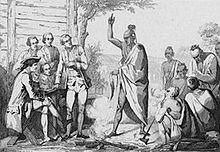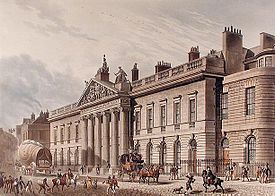
The British Empire comprised the dominions, colonies, protectorates, mandates, and other territories ruled or administered by the United Kingdom and its predecessor states. It began with the overseas possessions and trading posts established by England in the late 16th and early 17th centuries. At its height in the 19th and early 20th century, it was the largest empire in history and, for a century, was the foremost global power. By 1913, the British Empire held sway over 412 million people, 23 per cent of the world population at the time, and by 1920, it covered 35.5 million km2 (13.7 million sq mi), 24 per cent of the Earth's total land area. As a result, its constitutional, legal, linguistic, and cultural legacy is widespread. At the peak of its power, it was described as "the empire on which the sun never sets", as the sun was always shining on at least one of its territories.

Colonialism is the establishment and maintenance of one group of people as superior to other peoples and areas, often for imperialist control and exploitation, and through a range of practices and relations of colonization, installing coloniality and possibly colonies. That said there is no clear definition of colonialism and definitions may vary depending on the use of the term and context.
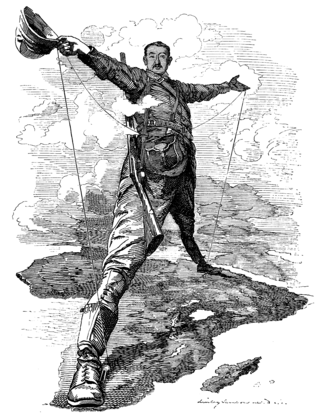
Imperialism is the practice, theory or attitude of maintaining or extending power over foreign nations, particularly through expansionism, employing both hard power and soft power. Imperialism focuses on establishing or maintaining hegemony and a more or less formal empire. While related to the concepts of colonialism, imperialism is a distinct concept that can apply to other forms of expansion and many forms of government.
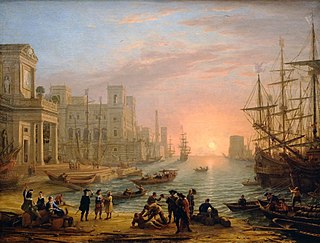
Mercantilism is a nationalist economic policy that is designed to maximize the exports and minimize the imports for an economy. In other words, it seeks to maximize the accumulation of resources within the country and use those resources for one-sided trade.

The Atlantic slave trade or transatlantic slave trade involved the transportation by slave traders of enslaved African people, mainly to the Americas. The outfitted European slave ships of the slave trade regularly used the triangular trade route and its Middle Passage, and existed from the 16th to the 19th centuries. The vast majority of those who were transported in the transatlantic slave trade were from Central and West Africa who had been sold by West African slave traders mainly to Portuguese, British, Spanish, Dutch, and French slave traders, while others had been captured directly by the slave traders in coastal raids; European slave traders gathered and imprisoned the enslaved at forts on the African coast and then brought them to the Americas. Except for the Portuguese, European slave traders generally did not participate in the raids because life expectancy for Europeans in sub-Saharan Africa was less than one year during the period of the slave trade.

The history of the Caribbean reveals the significant role the region played in the colonial struggles of the European powers since the 15th century. In the modern era, it remains strategically and economically important. In 1492, Christopher Columbus landed in the Caribbean and claimed the region for Spain. The following year, the first Spanish settlements were established in the Caribbean. Although the Spanish conquests of the Aztec empire and the Inca empire in the early sixteenth century made Mexico and Peru more desirable places for Spanish exploration and settlement, the Caribbean remained strategically important.
In European history, the Commercial Revolution saw the development of a European economy – based on trade – which began in the 11th century AD and operated until the advent of the Industrial Revolution in the mid-18th century. Beginning c. 1100 with the Crusades, Europeans rediscovered spices, silks, and other commodities then rare in Europe. Consumer demand fostered more trade, and trade expanded in the second half of the Middle Ages. Newly-forming European states, through voyages of discovery, investigated alternative trade routes in the 15th and 16th centuries, which allowed European powers to build vast, new international-trade networks. Nations also sought new sources of wealth and practiced mercantilism and colonialism. The Commercial Revolution is marked by an increase in general commerce, and in the growth of financial services such as banking, insurance and investing.
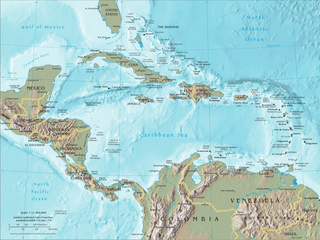
The era of piracy in the Caribbean began in the 1500s and phased out in the 1830s after the navies of the nations of Western Europe and North America with colonies in the Caribbean began combating pirates. The period during which pirates were most successful was from the 1660s to 1730s. Piracy flourished in the Caribbean because of the existence of pirate seaports such as Port Royal in Jamaica, Tortuga in Haiti, and Nassau in the Bahamas. Piracy in the Caribbean was part of a larger historical phenomenon of piracy, as it existed close to major trade and exploration routes in almost all the five oceans.

Pax Britannica was the period of relative peace between the great powers. During this time, the British Empire became the global hegemonic power, developed additional informal empire, and adopted the role of a "global policeman".

Triangular trade or triangle trade is trade between three ports or regions. Triangular trade usually evolves when a region has export commodities that are not required in the region from which its major imports come. It has been used to offset trade imbalances between different regions.
A plantation economy is an economy based on agricultural mass production, usually of a few commodity crops, grown on large farms worked by laborers or slaves. The properties are called plantations. Plantation economies rely on the export of cash crops as a source of income. Prominent crops included cotton, rubber, sugar cane, tobacco, figs, rice, kapok, sisal, and species in the genus Indigofera, used to produce indigo dye.

Slavery in the British and French Caribbean refers to slavery in the parts of the Caribbean dominated by France or the British Empire.

The Antebellum South Period era was during the historical timeline of the Southern United States, which extended from the conclusion of the War of 1812 to the start of the American Civil War in 1861. This era in the South's history was marked by the prevalent practice of slavery and the associated societal norms it cultivated. Over the course of this period, Southern leaders underwent a transformation in their perspective on slavery. Initially regarded as an awkward and temporary institution, it gradually evolved into a defended concept, with proponents arguing for its positive merits, while simultaneously vehemently opposing the burgeoning abolitionist movement.

The historical phenomenon of colonization is one that stretches around the globe and across time. Ancient and medieval colonialism was practiced by the Phoenicians, Greeks, Turks, and Arabs.

Archaic globalization is a phase in the history of globalization, and conventionally refers to globalizing events and developments from the time of the earliest civilizations until roughly 1600. Archaic globalization describes the relationships between communities and states and how they were created by the geographical spread of ideas and social norms at both local and regional levels.

The history of commercial tobacco production in the United States dates back to the 17th century when the first commercial crop was planted. The industry originated in the production of tobacco for British pipes and snuff. See Tobacco in the American colonies. In late 18th century there was an increase in demand for tobacco in the United States, where the demand for tobacco in the form of cigars and chewing tobacco increased. In the late 19th century production shifted to the manufactured cigarette.

The historical origins of globalization are the subject of ongoing debate. Though many scholars situate the origins of globalization in the modern era, others regard it as a phenomenon with a long history, dating back thousands of years. The period in the history of globalization roughly spanning the years between 1600 and 1800 is in turn known as the proto-globalization.
The history of the Dutch economy has faced several ups and downs throughout the 16th and 17th centuries. It has undergone moments of prosperity and was one of the dominant world powers in the 17th century. Its heavy involvement in the Atlantic trade had a large impact on its economy and growth. There is no clear definition for the Atlantic trade, but researchers have concluded it may be referred to as: Trade with the New World, and trade with the Asia through the Atlantic, including, but not limited to, imperialism and slavery based undertakings. Among the most important of these traders were the Dutch and the British. It is noted that these two nations experienced a more rapid growth than most due to their non-absolutist political institutions. This is only one of many beneficial factors that played a role in shaping growth and economic change within the Netherlands that occurred throughout the 16th and 17th centuries.

The planter class was a racial and socioeconomic caste which emerged in the Americas during European colonization in the early modern period. Members of the caste, most of whom were settlers of European descent, consisted of individuals who owned or were financially connected to plantations, large-scale farms devoted to the production of cash crops in high demand across Euro-American markets. These plantations were operated by the forced labour of slaves and indentured servants and typically existed in tropical climates, where the soil was fertile enough to handle the intensity of plantation agriculture. Cash crops produced on plantations owned by the planter class included tobacco, sugarcane, cotton, indigo, coffee, tea, cocoa, sisal, oil seeds, oil palms, hemp, rubber trees and fruits. In North America, the planter class formed part of the American gentry.

The Nantes slave trade resulted in the deportation, from the late 17th to the beginning of the 19th century, of more than 500,000 black African slaves into French ownership in the Americas, mainly in the Antilles. With 1,744 slave voyages, Nantes, France, was the principal French slave-trading port for the duration of this period. The Slave Trade was explicitly encouraged by the royal family and described by the church as an "ordinary occupation."








